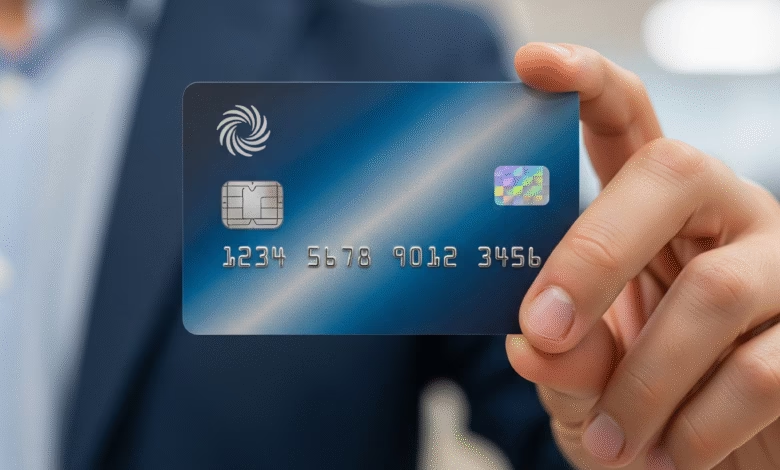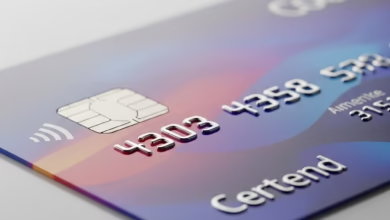How to protect yourself from credit card fraud
Learn some tips to avoid scams and fraud with your credit card

In an increasingly digital world, the convenience of credit cards is undeniable. We use them for everything from our morning coffee to major online purchases. However, this convenience comes with a significant risk: credit card fraud. As technology evolves, so do the tactics of criminals seeking to steal your financial information. In 2024 alone, credit card fraud losses amounted to billions of dollars in North America, affecting millions of individuals. Protecting yourself is not just a recommendation; it’s a necessity. This guide will provide you with a comprehensive, easy-to-understand roadmap to safeguarding your hard-earned money from fraudsters. We will delve into the most common scams, proactive protection strategies, and the immediate steps to take if you become a victim. By the end of this article, you will be equipped with the knowledge and tools to use your credit card with confidence and security.
Understanding the Enemy: What Are the Most Common Credit Card Fraud Schemes?

To effectively protect yourself, you first need to understand the methods criminals use. Fraudsters are constantly devising new ways to obtain your credit card information. Being aware of their tactics is the first line of defense. Here are some of the most prevalent types of credit card fraud targeting consumers today:
- Skimming: This classic method involves a small, illegal device called a “skimmer” attached to a legitimate card reader, such as an ATM or a gas pump. When you swipe your card, the skimmer secretly records the information from the magnetic stripe. Criminals then use this data to create a counterfeit card or make online purchases. Always be vigilant and inspect card readers for any signs of tampering before using them. Look for misaligned parts, unusual colors, or anything that seems out of place.
- Phishing, Vishing, and Smishing: These are all forms of social engineering where fraudsters impersonate legitimate organizations to trick you into revealing your personal and financial information.
- Phishing typically occurs through email. You might receive a message that appears to be from your bank, a popular online retailer, or even a government agency, asking you to “verify” your account details by clicking on a link. This link leads to a fake website designed to capture your login credentials and credit card number.
- Vishing is voice phishing, which happens over the phone. A scammer might call you pretending to be from your credit card company’s fraud department, warning you of suspicious activity on your account. They will then ask for your card details to “confirm your identity.”
- Smishing is SMS phishing, where these fraudulent attempts are made via text message. You might get a text about a prize you’ve won or a problem with a delivery, prompting you to click a link and enter your information.
- Malware and Spyware: Malicious software can infect your computer, tablet, or smartphone. Keyloggers, a type of spyware, can record everything you type, including your credit card numbers when you’re shopping online. This software can be unknowingly downloaded from suspicious email attachments, unverified apps, or compromised websites.
- Data Breaches: Unfortunately, sometimes your data can be compromised without any direct action on your part. Large-scale data breaches at major retailers, healthcare providers, and even financial institutions can expose the credit card information of millions of customers. While you can’t prevent these breaches, you can take steps to mitigate the damage if your information is exposed.
- “Card-Not-Present” (CNP) Fraud: This is the most common type of credit card fraud and occurs when a thief uses your card number, expiration date, and CVV code to make purchases online or over the phone. They don’t need the physical card, just the information. This is often the end result of phishing scams, data breaches, or malware attacks.
- Friendly Fraud: This type of fraud is committed by someone known to the victim, such as a family member or friend, who uses the card without authorization. It can also refer to situations where a legitimate cardholder makes a purchase and then disputes the charge, claiming it was fraudulent to get their money back.
- Account Takeover: In this sophisticated scheme, a fraudster gains access to your entire credit card account online. They might change your contact information, add themselves as an authorized user, and request a new card to be sent to a different address. This gives them complete control to rack up charges.
Building Your Fortress: How Can You Proactively Protect Your Credit Card Information?
The best way to fight credit card fraud is to prevent it from happening in the first place. By adopting a series of good habits and utilizing available security features, you can significantly reduce your risk of becoming a victim. Think of these practices as building a digital fortress around your financial life.
Securing Your Physical and Digital Wallets
- Guard Your Physical Card: Treat your credit card like cash. Don’t leave it lying around in your car, at your desk, or in an unlocked locker. When in public, be mindful of who is around you when you take out your wallet.
- Sign Your Card Immediately: As soon as you receive a new credit card, sign the back of it. An unsigned card is an open invitation for a thief to sign it themselves and attempt to use it.
- Shred Old Cards and Documents: When you close an account or receive a replacement card, don’t just toss the old one in the trash. Invest in a cross-cut shredder and destroy it. The same goes for any documents that contain your credit card number, such as statements and receipts.
- Use Strong, Unique Passwords for Online Accounts: Avoid using easily guessable passwords like “123456” or “password.” Create complex passwords that are a mix of upper and lowercase letters, numbers, and symbols. Most importantly, use a different password for each of your online accounts. If one account is compromised, the others will remain safe. Consider using a reputable password manager to help you create and store strong passwords securely.
- Enable Two-Factor Authentication (2FA): Whenever possible, enable two-factor authentication on your financial and email accounts. This adds an extra layer of security by requiring a second form of verification, such as a code sent to your phone, in addition to your password. This makes it much harder for a criminal to access your account, even if they have your password.
Smart Practices for Everyday Transactions
- Regularly Monitor Your Statements: Don’t wait for your monthly statement to arrive in the mail or your inbox. Log in to your online banking portal or use your credit card issuer’s mobile app to review your transactions every few days. The sooner you spot a fraudulent charge, the quicker you can report it and minimize the damage.
- Set Up Transaction Alerts: Most credit card companies allow you to set up customized alerts for your account. You can choose to be notified via email or text message for purchases over a certain amount, for online transactions, or for transactions made in a foreign country. These real-time alerts can be an early warning sign of fraudulent activity.
- Be Wary of Public Wi-Fi: Avoid conducting any financial transactions or accessing sensitive accounts when connected to a public Wi-Fi network, such as those in coffee shops, airports, or hotels. These networks are often unsecured, making it easy for hackers to intercept your data. If you must use public Wi-Fi, use a Virtual Private Network (VPN) to encrypt your internet connection and protect your information.
- Tap to Pay with Contactless Cards or Mobile Wallets: Whenever possible, use the “tap to pay” feature on your contactless card or a mobile wallet service like Apple Pay, Google Pay, or Samsung Pay. These methods use a technology called tokenization, which creates a unique, one-time code for each transaction. Your actual credit card number is never transmitted, making it an incredibly secure way to pay.
Your Digital Shield: How Do You Safely Shop Online and Avoid Scams?

Online shopping is a major playground for credit card fraudsters. However, with a few precautions, you can navigate the digital marketplace safely and confidently.
- Shop on Secure Websites: Before entering your credit card information on any website, ensure that it is secure. Look for “https://” at the beginning of the web address (the “s” stands for secure) and a padlock icon in your browser’s address bar. This indicates that the website has an SSL (Secure Sockets Layer) certificate, which encrypts the data transmitted between your browser and the site.
- Be Cautious of Deals That Are Too Good to Be True: If you see an online ad for a brand-new, high-end electronic device at a 90% discount, it’s almost certainly a scam. These fake websites are designed to lure you in with unbelievable prices and steal your credit card information. Stick to reputable, well-known retailers. If you’re unsure about a website, do some research and look for reviews before making a purchase.
- Never Send Your Credit Card Information via Email or Text: Legitimate companies will never ask you to send your credit card number, CVV code, or expiration date through an unsecure channel like email or text message. If you receive such a request, it is a major red flag.
- Beware of Phishing Emails and Texts: As mentioned earlier, be highly suspicious of unsolicited emails or text messages that ask you to click on a link to verify your account or claim a prize. Hover over links before clicking to see the actual destination URL. If it looks suspicious, don’t click it. If you’re concerned about an account, go directly to the company’s website by typing the address into your browser or using a bookmarked link.
- Consider Using a Virtual Credit Card Number: Some credit card issuers and financial technology companies offer virtual credit card numbers. These are temporary, randomly generated numbers that are linked to your actual credit card account but mask your real number. You can use them for a single online purchase or set them to expire after a certain period. This is an excellent way to protect your primary account information from data breaches.
After the Fact: What Are the Immediate Steps to Take If You Suspect Fraud?
Even with the best precautions, credit card fraud can still happen. If you discover suspicious charges on your account, acting quickly is crucial to limit the damage and protect your finances.
- Step 1: Contact Your Credit Card Issuer Immediately: The moment you suspect fraud, call the phone number on the back of your credit card. Inform the representative that you believe your card has been compromised. They will likely freeze your account to prevent any further fraudulent charges and begin an investigation. Time is of the essence, so don’t delay this step.
- Step 2: Review Your Recent Transactions Carefully: Go through your recent transactions with the customer service representative to identify all the fraudulent charges. Provide them with as much detail as you can.
- Step 3: Request a New Card and Account Number: Your card issuer will cancel your compromised card and issue you a new one with a new number. Be sure to update your new card information for any recurring payments or bills you have linked to the old card.
- Step 4: File a Police Report (If Necessary): While not always required, filing a police report can be helpful, especially in cases of significant fraud or identity theft. A police report can serve as official documentation of the crime.
- Step 5: Place a Fraud Alert or Credit Freeze on Your Credit Reports: To protect yourself from further identity theft, consider placing a fraud alert or a credit freeze on your credit files.
- A fraud alert requires lenders to take extra steps to verify your identity before opening a new line of credit in your name. You only need to contact one of the three major credit bureaus (Equifax, Experian, or TransUnion) in the U.S., and they will notify the other two. In Canada, you would contact Equifax Canada and TransUnion Canada.
- A credit freeze is a more drastic measure that restricts access to your credit report, making it much more difficult for anyone, including yourself, to open new accounts. You will need to contact each credit bureau individually to place and lift a freeze.
Understanding Your Rights: What Are Your Liability Limits for Fraudulent Charges?
One of the biggest advantages of using a credit card is the robust consumer protection it offers. In the United States, the Fair Credit Billing Act (FCBA) limits your liability for unauthorized charges to a maximum of $50. However, all major credit card networks (Visa, Mastercard, American Express, and Discover) have “zero liability” policies. This means that as long as you report the fraud in a timely manner, you will not be held responsible for any of the fraudulent charges.

In Canada, the protections are similar. While there isn’t a specific law like the FCBA, the major credit card networks also offer zero liability policies. It’s important to report any suspected fraud to your card issuer as soon as you become aware of it to ensure you are fully protected under these policies.
Protecting yourself from credit card fraud requires a combination of vigilance, good habits, and leveraging the security tools at your disposal. By understanding the tactics of fraudsters, proactively securing your information, and knowing what to do if you become a victim, you can enjoy the convenience of your credit card with peace of mind. Stay informed, stay alert, and stay secure. Your financial well-being depends on it.





